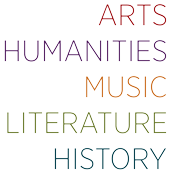Details
When:
No class on February 12
Where: The Hampton Inn
Cost: $165.00 for 6 session(s)
Type: In Person
Category:
Instructor: Kevin Justus wears dual career hats, being a musician and an art historian. Kevin has his Ph.D. in Art History from the University of North Carolina at Chapel Hill.
Kevin Justus
Realists, Impressionists, Monarchs and Republicans—France in the Second Empire and the Third Republic
France during the beginning of the 19th Century could hardly be called stable. Revolution followed revolution, coup followed coup, France could have a king one day and a Republic the next… that is until the advent of the Second Empire and Napoleon III. For twenty years, 1851-1871, France again became the power of the world, seemingly prosperous and at peace. Political, social and artistic fissures were forming that would eventually consume France and the Second Empire and all its artistic traditions. But all hope was not lost with the formation of the French Third Republic at Versailles. It would seem that politics, art and ideas were infused with a new energy, an energy that would so tragically be snuffed out by World War I. Using Proust as a guiding influence, this series of lectures will look at the dramatically changing world in France during the second half of the 19th Century and the beginning of the 20th through the lens of the Fine Arts.
Week 1: Where do we go from here?
France in 1848—the end of the world or a new beginning—or maybe it is a little bit of both, but whatever the case, Paris is the center of the world. Romanticism, Neo-Classicism or Realism? What do we choose? Delacroix, Gericault, and Courbet.
Week 2: Napoleon again?
Napoleon III, Haussmann and Paris. The completion of the Louvre and the building of the Paris Opera—Garnier and extravagant excess while dancing on the head of a pin. The artistic establishment, the French Academy and the need for something new. Artistic bankruptcy or imaginative richness—but who has what or which? Of course it is Manet, is it not?
Week 3: Manet and a new view of the World
Behind all that glitters is not gold. The painting of Modern Life. Is he a Realist or an Impressionist? “I don’t care, all I want to be is accepted by the artistic establishment.” No such luck. The ups and downs of being an artist in Second Empire France.
Week 4: The ideal of the French Academy or Ecole des Beaux-Arts and the triumph of the Bourgeoisie
Gerome, Meissioner, Flandrin, Winterhalter and Bougereau, the beauty and fatigue of an artistic style. “I know what we will do, we will infuse our works with beautiful women and depict the exotic and ideal world.
That way no one will realize we have exhausted the Academic Tradition and the world is falling apart around us.”
Week 5: The end of the world, again
The fall of Napoleon III and the establishment of the French Third Republic. Pierre de Nolhac, Versailles, and the need for Artistic legitimacy. “We don’t care about that” say the Impressionists, “we just love light, color and pretty things.” Not so fast, there is so much more to the Impressionists than color and light. In the end the Impressionists were commenting on Modern Life and the harsh realities of the World. Pisarro, Caillebotte and the representation of the city and, of course, Monet and Renoir, two horses of a different color going in two distinctive directions.
Week 6: Proustian Paris and the Paris of Memory
The fraying of the Impressionistic World and the move to Post-Impressionism as the World marches towards War. Toulouse-Lautrec, Van Gogh and Gauguin. Now it really is the end of the World. “We have learned nothing and forgotten nothing.”
Register for Proustian Paris
Online registration has been closed for this class. Please call (520) 777-5817 for information.
